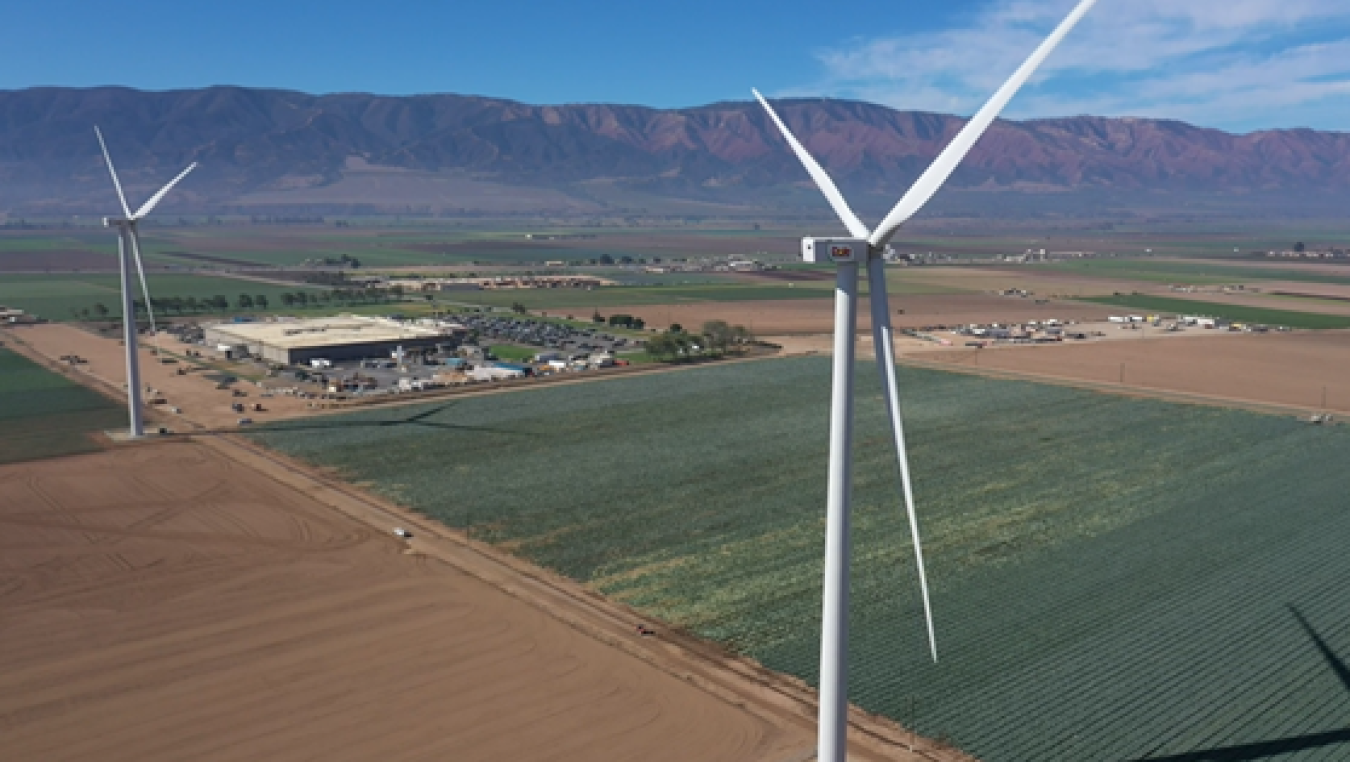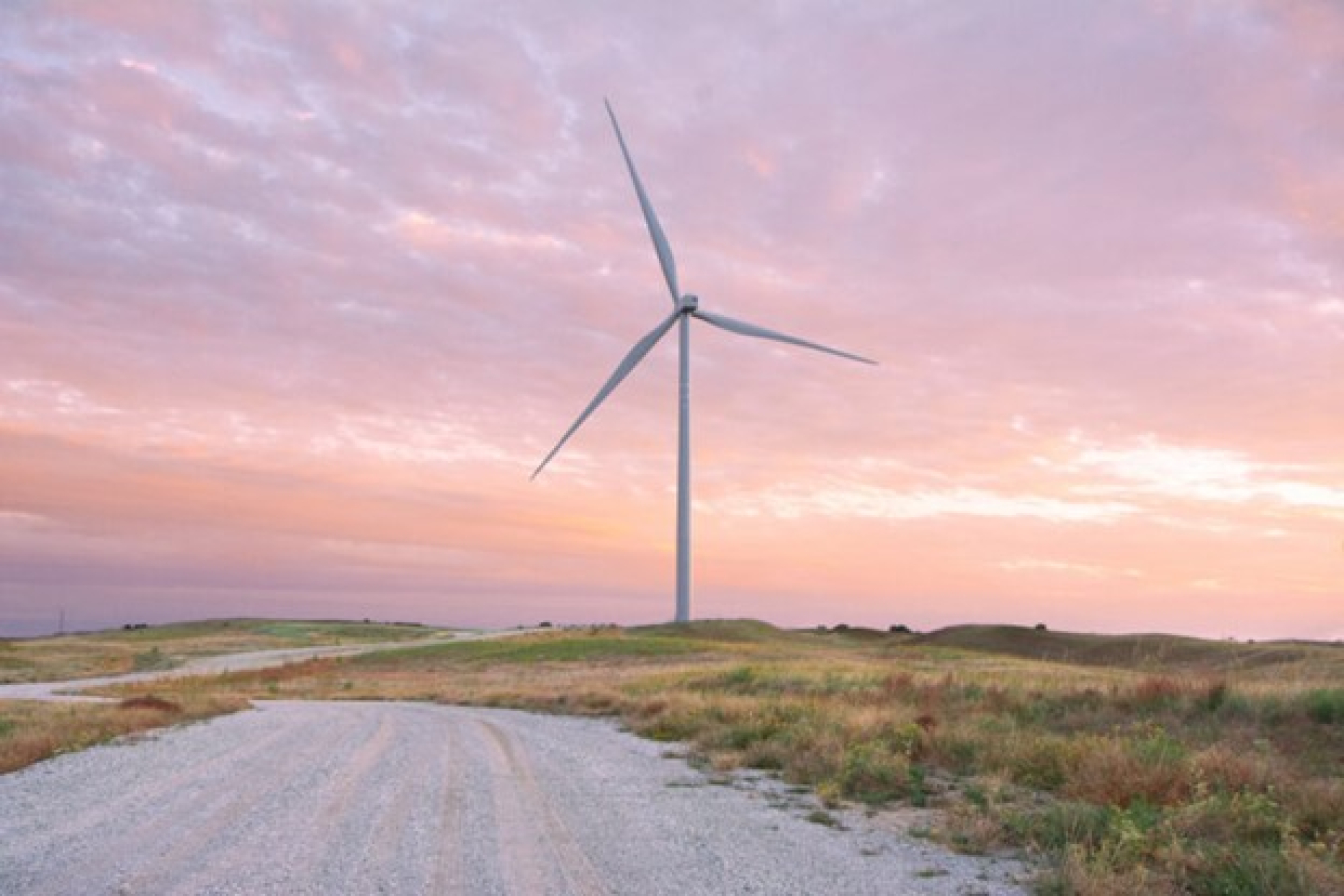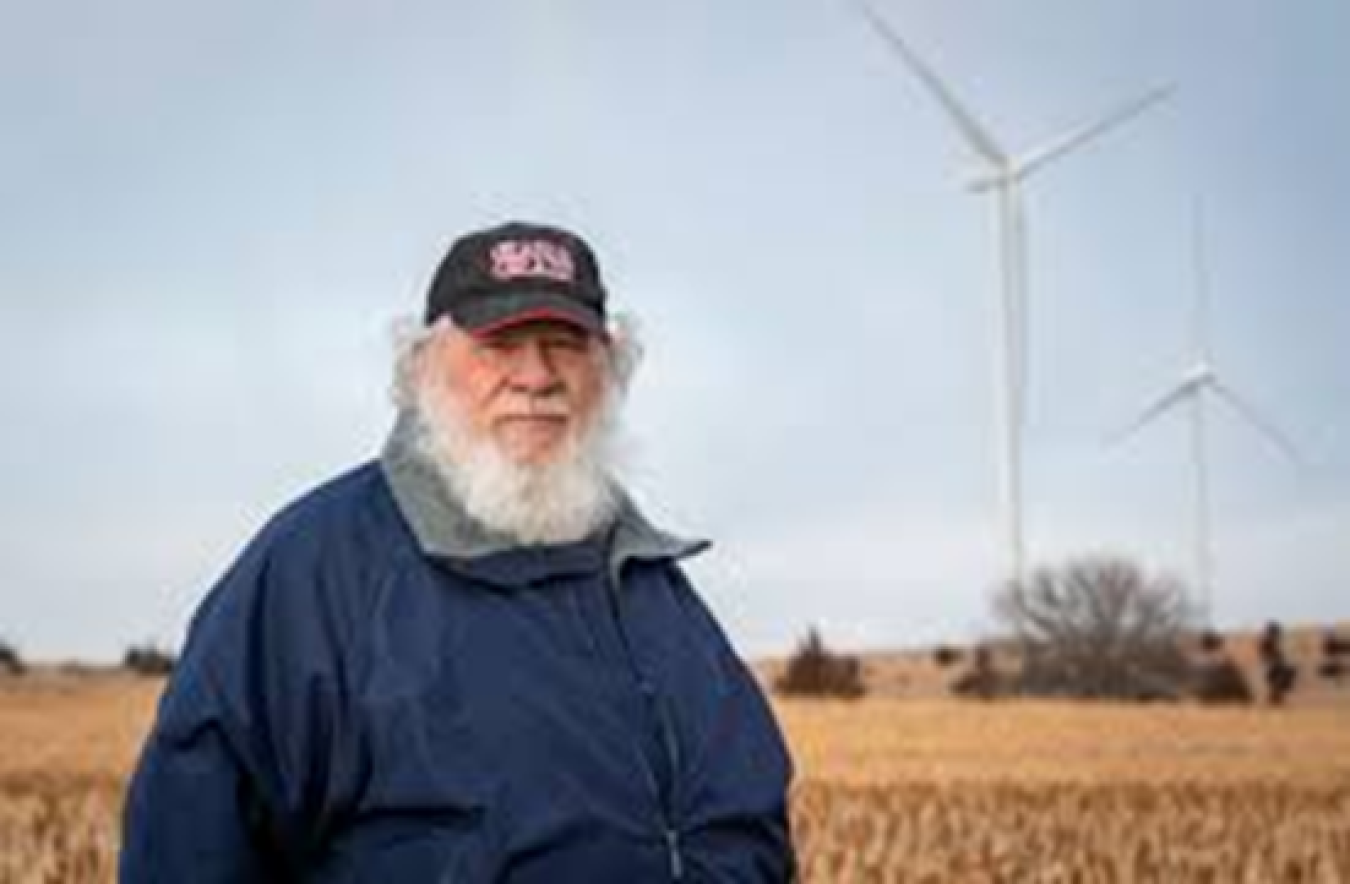Distributed wind is entering your community! Check out how distributed wind energy is expanding as a clean energy resource for U.S. communities.
Wind Energy Technologies Office
August 24, 2023New data from the U.S. Department of Energy shows distributed wind energy—wind turbines that provide power for nearby customers—is expanding as a clean energy resource for U.S. communities. In 2022, the U.S. distributed wind sector experienced a year filled with growth and opportunity, from new policy developments, to increases in more wind turbines in distributed applications among various industries and communities.
The latest edition of DOE’s Distributed Wind Market Report finds that all 50 states, the District of Columbia, Puerto Rico, Guam, and the U.S. Virgin Islands have installed a combined 1,104 megawatts (MW) of distributed wind since 2003. Here, we highlight some of the places where distributed wind is being deployed today and its impact across the country.
Distributed Wind Continues to Expand in Rural Communities
Unobstructed wind resources and high retail electricity rates make distributed wind an attractive and cost-effective source of clean energy for rural communities. These areas represented a significant percentage of newly installed U.S. distributed wind projects deployed in 2022. Roughly 92% of new distributed wind capacity came from three states: California, Iowa, and Nebraska. The 29.5 megawatts (MW) of new distributed wind capacity nationwide marked a significant increase from the previous two years of 11.7 MW added in 2021 and 21.9 MW in 2020.
As distributed wind deployment rises, stakeholders in rural communities are beginning to see the value and benefit in distributed wind as a viable option in a cost-effective and clean energy source for their grid. Two projects from California and Nebraska accounted for almost 11 MW of new installed capacity.

Two 2.7 MW General Electric wind turbines provide clean energy for Dole Fresh Vegetables Inc., based in Soledad, California.
One of the projects serves the Dole Food Company. Most of us associate the company with produce, maybe even a glass of orange juice. If you polled people around the United States, very few would associate it with energy. Now, you can, as the company uses distributed wind as a clean energy source. Dole Fresh Vegetables Inc, based in Soledad, California, collaborated with Foundation Windpower—a company that installs distributed wind turbines—to install 5.64 MW of wind to provide clean energy and significantly reduce carbon emissions for the company.

A 2.8 MW General Electric wind turbine used locally by customers in Franklin County, Nebraska.
The second project is located in Franklin County, Nebraska and was developed by Southern Public Power District, a utility that provides power for seven Nebraska counties. In collaboration with Bluestem Energy Solutions, the distributed wind project will potentially generate electricity for over 2,000 homes annually and will bolster economic development for Franklin County through property tax revenue, landowner payments, and stable electricity prices.
How Distributed Wind Can Impact Daily Lives
As domestic wind energy continues to expand, everyday people want to know whether distributed wind is a viable option for them. The answer may be yes, if you have enough land and live in a windy area. Depending on your wind resource, a distributed wind energy system can lower your electricity bill, help you avoid the high costs of extending utility power lines to remote locations, and sometimes can provide off-grid power. The financial incentives to utilize clean energy resources are growing. Following the passage of the Inflation Reduction Act (IRA), U.S. homeowners are now eligible for tax credits of up to 30% for residential wind energy projects. Distributed wind can be a cost-effective and eco-friendly tool for many communities, and can also be used in combination with other distributed energy resources like solar or energy storage.

According to the USDA, IRA funds are expected to support renewable energy and energy-efficiency projects for more than 41,500 farms and small businesses.
Policy Support Leads to Rise in Distributed Wind Investment
The future of distributed wind looks promising as policy support for clean energy technologies has increased in recent years. Federal policies like the IRA and Infrastructure Investment and Jobs Act of 2022 are spurring significant clean energy investment and deployment through funding program, grants, loans, and tax credits to advance clean energy technologies.
AUTHOR
Karey Eyo is a communications specialist supporting the U.S. Department of Energy’s Wind Energy Technologies Office.
A large beneficiary of new policy support was the U.S. Department of Agriculture Rural Energy for America Program (USDA REAP), which received over $2 billion from the IRA, with $303 million set aside for underutilized technologies including distributed wind. In 2022, USDA REAP awarded $1,069,922 in grants to 12 wind projects across six states, a significant increase from the prior year’s funding of $696,964 in wind grants.
As the 2023 edition of DOE’s annual Distributed Wind Market Report shows, distributed wind is a key tool for communities as they move toward cleaner electricity and is growing across the country.
Check out WETO’s Distributed Wind Photo Gallery for more examples of distributed wind’s diversity, and read our blog on the Top 10 Things You Didn’t Know About Distributed Wind.

